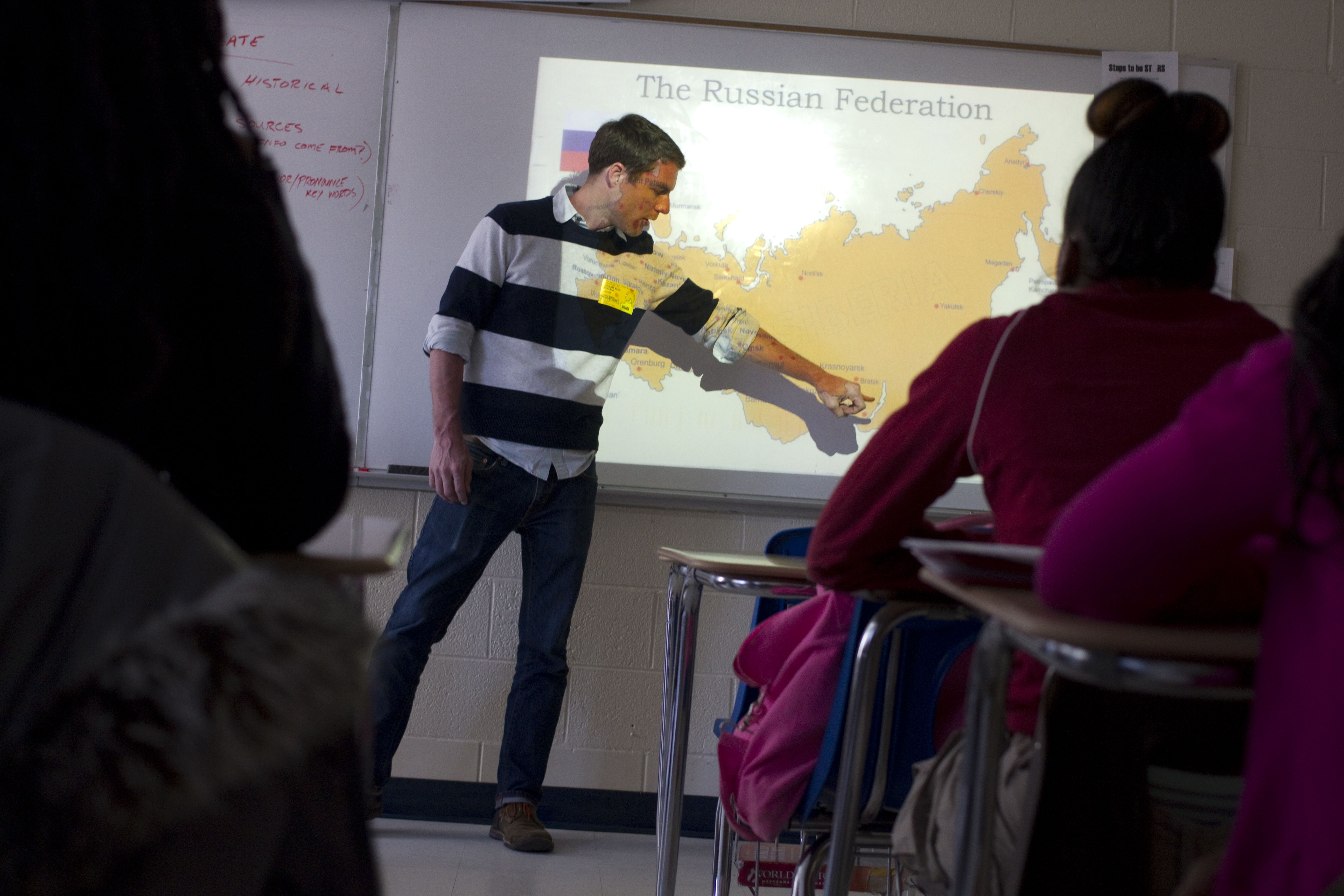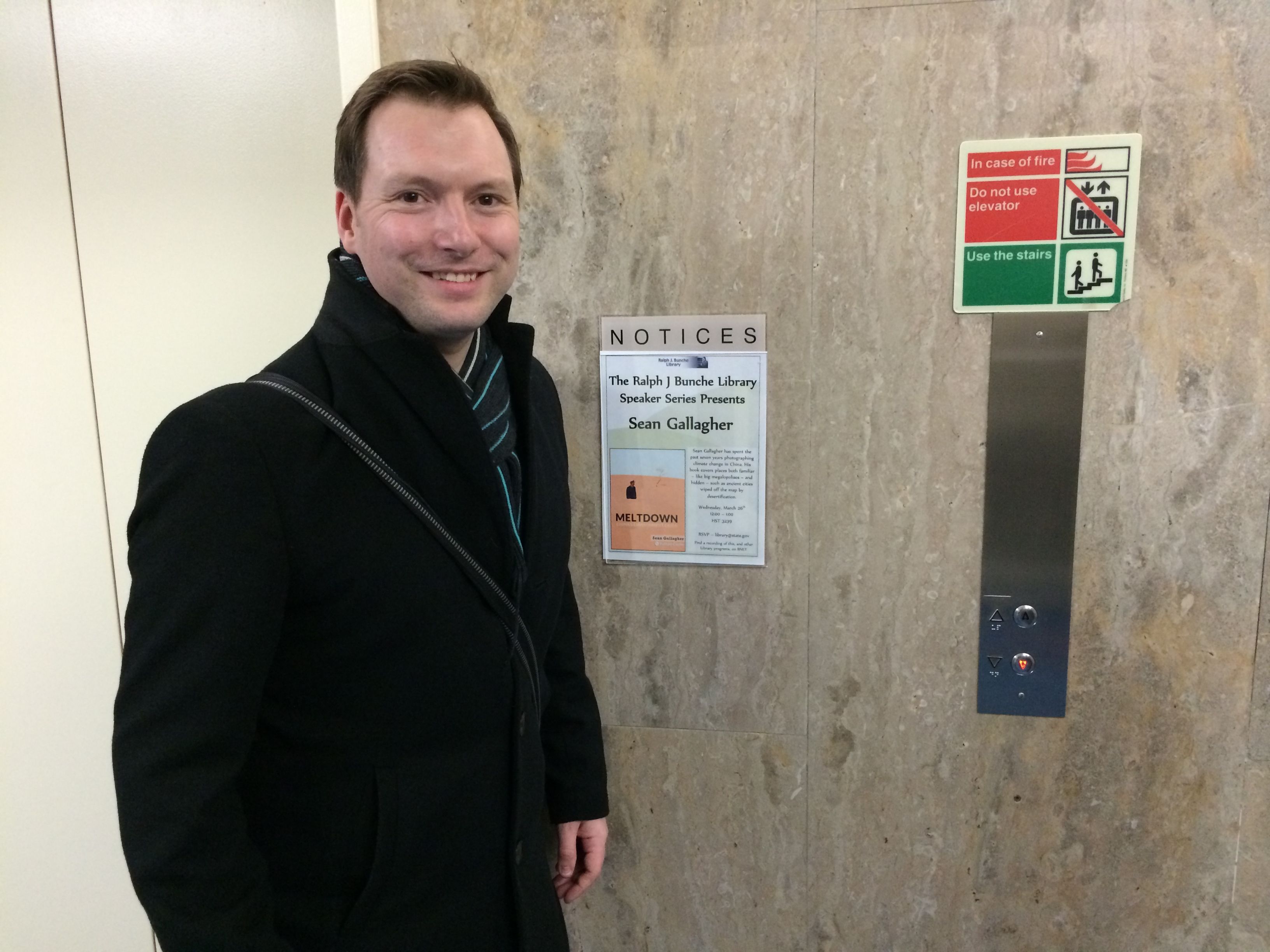At the bottom of this post, check out the video Pulitzer Center multimedia projects coordinator Meghan Dhaliwal put together from Brendan Hoffman's talks in D.C. classrooms.
You know a school talk is going well when the bell rings at the end of class and a student pipes to the visiting journalist, “You can keep going.”
That’s what happened at The SEED School in southeast Washington, D.C., when freelance photojournalist Brendan Hoffman came to discuss his work in Russia and Ukraine with students. Hoffman, based in Moscow, was in town for a Pulitzer Center screening of his short film “Monotown: Asbest” at the D.C. Environmental Film Festival last week.
“I give you props,” another student told Brendan after seeing the photographer’s images from volatile Kiev earlier this winter. “I give you a lot of props.”
Brendan and his audiences exchanged Instagram handles and in one case talked about photography projects the students want to undertake with their cell phones.
“Doesn't matter what camera you use, guys,” Brendan told them. “A camera's a camera. It's how you use it.” He snapped a photo of their Instagram handles on the board and posted it to his own account, @hoffmanbrendan. The caption read:
“I had an awesome day today meeting with high school classes in #DC to talk about my work in Russia and Ukraine, all organized by the #pulitzercenter. These are the Instagram handles of some of the students I met today, and I’m curious to see what they’re up to in everyday life. Great discussions, and looking forward to more tomorrow.”
The post got over 300 likes.
As part of the “Urban Legacies, Rural Traditions”-themed film festival we also screened “Down to the Countryside,” a short documentary by Sun Yunfan and Leah Thompson about China’s back-to-the-land movement, and Sean Gallagher’s “India’s Toxic Tanneries,” a stunning visual representation of the human cost of manufacturing leather. Yunfan, Leah and Sean also spent time in D.C. classrooms before and after the festival. Over the course of the week the four journalists worked with 16 classes and nearly 400 area students.
Yunfan and Leah spoke to geography students at Cesar Chavez Public Charter School about the toll China's rapid urbanization is taking on its rural traditions. The students reflected on the value of preserving long-cultivated crafts such as the fire barrels that provide warmth to a person sitting in them or the molds that give intricate shape to poppy seed cakes. "I like life in the country," said one 9th grader. "It's more peaceful, more tranquil."
In “Monotown: Asbest” we learn the story of a young Russian named Nikolai, raised in Asbest and schooled in St. Petersburg, who returned to his hometown to work in the factory there instead of pursuing his musical interests in his country’s cultural capital.
“How Nikolai came back to better his community, I think I might eventually take that role,” said one student at SEED to Brendan.
Sean – on Instagram at @sean_gallagher_photo – shared a collection of his photographs from China, where he lives and has spent the past seven years documenting the effects of climate change — check out his e-book Meltdown. He also showed photos from recent reporting in India, where he captured the disturbing health impacts of pesticides, tanneries and e-waste on people who live and work in the region.
“I don’t want people to think, ‘Oh, look at all the problems in China,’ or ‘Look at all the problems in America,’” Sean told students at Cardozo Senior High School. “I want to take pictures of things that matter. I want people to care about the things that I photograph.”
One student at Woodrow Wilson High School said Sean’s work was “really eye-opening” because “we hear about these issues, but we never get to come in contact with how real these problems are.” A classmate emphasized the importance of understanding large-scale scenarios like the ones Sean covers as long-term contributors to the more urgent crises we hear about in the news, such as the collapse of the Rana Plaza factory in Bangladesh.
Caroline D’Angelo, who as Pulitzer Center social media editor was instrumental in the creation, promotion and distribution of Meltdown last year, now works as an eco-management analyst with the Greening Diplomacy Initiative at the U.S. Department of State and arranged for a change of pace from Sean’s classroom talks. He participated in the lunchtime Speaker Series in the Ralph J. Bunche Library at the State Department, where he spoke with about thirty-five employees about his work.
“I don’t show you these pictures to make you feel really bad,” Sean explained to Cardozo students the next day. “I show them so we can talk about what we can do.”





